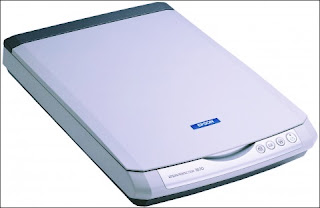

- WIFI SCANNER DOWNLOAD WINDOWS 10 HOW TO
- WIFI SCANNER DOWNLOAD WINDOWS 10 WINDOWS 10
- WIFI SCANNER DOWNLOAD WINDOWS 10 PC
- WIFI SCANNER DOWNLOAD WINDOWS 10 FREE
If you get much lower than -80 you’ll probably notice connection problems. Typically, you’ll find signal ranges in the -80 dBm to -40 dBm. RSSI is a reading of signal strength measured in dBm, and scales from 0, being the best, to -120, which is the worst. If it appears orange (as it does in Figure B), that’s because one of the four conditions shown in the icons isn’t met, or your RSSI is out of acceptable range.

The circle with a percentage in it reflects whether or not your connection can be improved, and is a visual representation of the quality of your connection. The icons are highlighted orange (from left to right) if WiFi Analyzer thinks you have a bad connection, are on a bad channel, don’t have internet access, or if your connection isn’t secure. All of the data presented on this screen is displayed in real time.įigure B The main WiFi Analyzer dashboard screen, where you can see information about your connection and what needs to be done to fix it.Īt the top of Figure B you’ll notice a circle that reports on the quality of your connection, a bar that shows your RSSI, and four icons. When you open WiFi Analyzer you’ll be greeted with the screen in Figure B, which shows a variety of information about your Wi-Fi connection, like your network, its channel, your device ID, and other details.
WIFI SCANNER DOWNLOAD WINDOWS 10 HOW TO
How to assess your signal strength with WiFi Analyzer
WIFI SCANNER DOWNLOAD WINDOWS 10 FREE
Be sure you’re on the page for the app built by Matt Haffner–this is the app I use in this tutorial and recommend for ease of use and solid features in the free version.
WIFI SCANNER DOWNLOAD WINDOWS 10 WINDOWS 10
WiFi Analyzer is free with premium options available, but all of the essential tools you need to diagnose common Wi-Fi problems are included with the free version.įigure A The WiFi Analyzer page in the Windows 10 app store. For that, it’s best to look in the Microsoft Store, where apps have to pass a certification test prior to being published.įor this guide, I’m using one of the most popular wireless diagnostics tools for Windows 10, WiFi Analyzer by Matt Hafner ( Figure A). There are a lot of third-party options to choose from, but when it comes to doing something as sensitive as scanning all of the devices on a network and compiling data about the machine the app is running on you want a trusted program. Unlike macOS, Windows 10 doesn’t have a built-in wireless diagnostics tool. How to choose the right Windows 10 Wi-Fi analytics tool Not all of them, of course: If your connection is slow whether you’re wired or wireless, there’s probably too many people using the internet in your area, and no one short of your ISP can resolve that issue. Luckily, some of the most common Wi-Fi problems are easily fixed. SEE: Future of 5G: Projections, rollouts, use cases, and more (free PDF) (TechRepublic) Unfortunately, Wi-Fi has become the remote professional’s coronavirus paradox: It’s absolutely necessary for work, but more people working from home means more Wi-Fi networks congesting the average neighborhood, more bandwidth being used, and less Wi-Fi reliability. Kubernetes is the key to cloud, but cost containment is criticalĪzure Monitor’s Change Analysis helps you troubleshoot problems quickly Networking: Must-read coverageĥG Open RAN gains momentum: Next steps and challenges With more people working from home than ever before due to the COVID-19 pandemic, Wi-Fi can be the difference between a good day’s work and a frustrating, unproductive few hours. Good home Wi-Fi is a necessity for the modern professional. Having trouble with Wi-Fi at your home office? Here's how you can solve common problems like crowded channels and weak signals with a free app available in the Microsoft Store.
WIFI SCANNER DOWNLOAD WINDOWS 10 PC
How to diagnose and fix Wi-Fi network problems using a Windows 10 PC


 0 kommentar(er)
0 kommentar(er)
